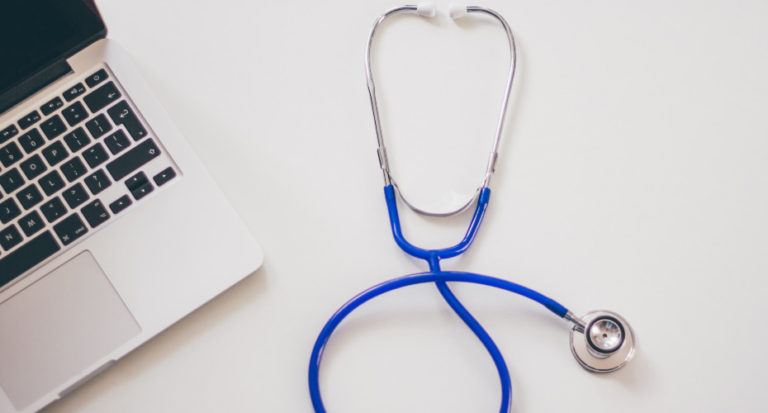UK (University of Exeter) Stethoscope has important role in the era of ever-increasing technological power and sophistication, new cultural history suggests

The stethoscope still has an important role in a world of ever-increasing technological power and sophistication, a major new cultural history of the instrument shows.
It might now seem like a relic of a bygone era, outmoded by digital versions or rendered obsolete by portable ultrasound machines and artificial intelligence, but researchers say it will remain a key part of a doctor’s kit, despite the growing use of innovations in healthcare.
Stethoscope: The Making of a Medical Icon – is written by Associate Professor Tom Rice from the University of Exeter and Associate Professor Anna Harris from Maastricht University.
Professor Rice spent a year at St Thomas’ Hospital in London, where he accompanied groups of medical students as they embarked on their clinical training, attending the classes at which medical students learned to listen and mastering the skill of listening to the heart.
Professor Harris had already trained and worked as a doctor but had chosen to move away from practising medicine to study it as a social scientist. She attended classes at medical schools in Melbourne, Australia, and Maastricht in the Netherlands, where students were taught to use the stethoscope to listen to the lungs. The two researchers brought together observations from their fieldwork, as well as archival research, to produce an original cultural history.
Professor Rice said: “Though once an emblem of medical distance and detachment, in an increasingly technologically sophisticated world the stethoscope has come to stand for the doctor at the bedside, talking and listening to the patient. It represents a human and humane type of medicine, which some perceive to be under threat.”
The book shows how the stethoscope originally changed the way that doctors viewed both themselves and their patients, as they became less interpreters of the patient’s words and more interrogators of the body. It had a profound impact on doctor-patient relationships and led to patients becoming more tolerant of intrusive examinations and the physical proximity of the doctor. The technique also placed demands on the bodies of doctors, who had to master new sensory and interpersonal skills.
Professor Rice said: “It was the first technology to allow sounds to be made the focus of an individual listener’s experience, attention and thought. This way of approaching sound and structuring auditory space was then replicated in numerous subsequent technologies, including the telephone, headsets for gramophones and dictation machines, as well as the earphones so many of us use today.”
The book discusses how and why the stethoscope was invented, its reception and gradual acceptance, as well as the continual modification and adaptation it has undergone. The researchers also looked at accounts of stethoscope use from around the world, and how the instrument has been taken up by different professions, as well as its appearance in art and literature.
Although the stethoscope was eventually adopted widely, it was not used in quite the same way everywhere and was often given a distinctive local twist, as well as being used to examine many different parts of the body.
Professor Harris said: “More recently, while technological innovation, especially in medical imaging, has affected the ways in which stethoscopic listening is used, and continues to make some doctors less dependent on the stethoscope, many argue that it is vital to preserve both the clinical skills and the human contact which use of the instrument requires. At the same time, in parts of the world where access to expensive equipment is limited, the stethoscope remains a core diagnostic technology.”
